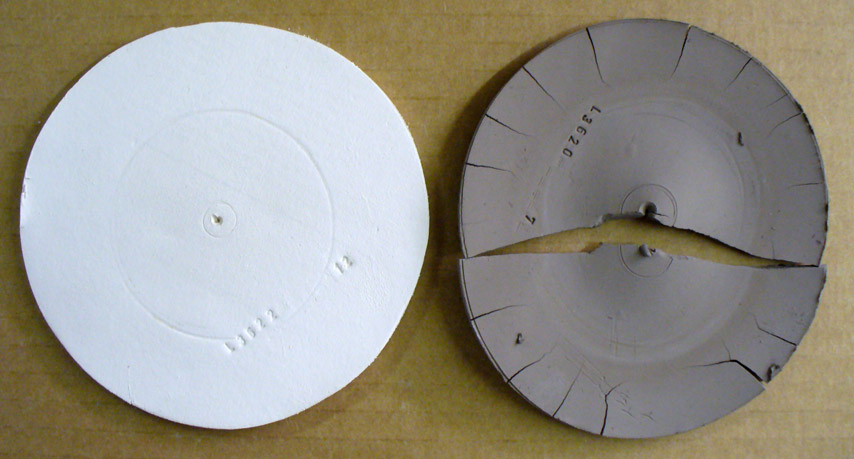| Monthly Tech-Tip | No tracking! No ads! |
Primary Clay
A clay deposit that is near the site of erosion and alteration. They have more mechanical impurities and fewer chemical and mineralogical impurities. Primary clays have larger particles and less plasticity.
Key phrases linking here: primary clay - Learn more
Details
Kaolinite is the closest thing we have to pure clay mineral. Clays that have been deposited at or near their site of alteration. They typically are contaminated by rocks and mineral particles that must be removed by processing. The cleanest and lowest iron clays are from this type of deposit. Kaolins are primary clays.
Related Information

This picture has its own page with more detail, click here to see it.
Ball clay and kaolin test bars side-by-side fired from cone 9-11 oxidation and 10 reduction.
A Grolleg based porcelain vs. a ball clay and American kaolin porcelain

This picture has its own page with more detail, click here to see it.
These mugs were fired in the same kiln load at cone 10R and have the same clear glaze, G1947U. The mug on the left is a Grolleg kaolin (52% Grolleg kaolin, 24% silica and 19% Mahavir feldspar, 5% bentonite). The one on the right is 15% M23 ball clay, 40% #6 Tile kaolin, 15% Nepheline, 25% silica, 3% bentonite. Clearly, the Grolleg porcelain fires so much whiter.
Guess which of these fired clays employs New Zealand kaolin

This picture has its own page with more detail, click here to see it.
The whitest test bar here is a New-Zealand-kaolin-based cone 6 porcelain (NZK). NZK has low plasticity, so this body employs VeeGum to improve it. Immediately to the left of it are three North American-koalin-based bodies using standard bentonites. The bar to its right is a Grolleg-based body that uses a standard bentonite rather than a white burning one. All are plastic.
How a kaolin and ball clay compare in a dry performance test

This picture has its own page with more detail, click here to see it.
These are DFAC drying performance disks of a large-particle kaolin (OptiKast) and a ball clay (Plainsman A2). This test reveals a clay's response to uneven drying (these disks are dried with the center portion covered). The kaolin feels smoother yet its ultimate particles are ten to one hundred times bigger than a typical ball clay. Thus it shrinks much less. The ball clay has dramatically lower water permeability, water from the center protected portion resists migration to the outer edge during drying. When the inner section finally dried the outer was already rigid so it split the disk in two and pulled all the edge cracks. Most ball clays shrink more and crack worse than this (cracks concentric to the center also appear). So why use ball clay? This kaolin is so lacking in plasticity it was barely possible to even make this disk. And it is so weak that it can easily break just by handling it. Still, it is useful to make casting bodies. But the ball clay, when used as a percentage of a body mix, can produce highly plastic bodies than can be dried without trouble if done evenly.
Links
| Minerals |
Kaolinite
The most fundamental clay mineral. This mineral is found in nature in its purest form as kaolin. How |
| Glossary |
Secondary Clay
Clays form by the weathering of rock deposits over long periods. Primary clays are found near the site of alteration. Secondary clays are transported by water and laid down in layers. |
| By Tony Hansen Follow me on        |  |
Got a Question?
Buy me a coffee and we can talk

https://digitalfire.com, All Rights Reserved
Privacy Policy
